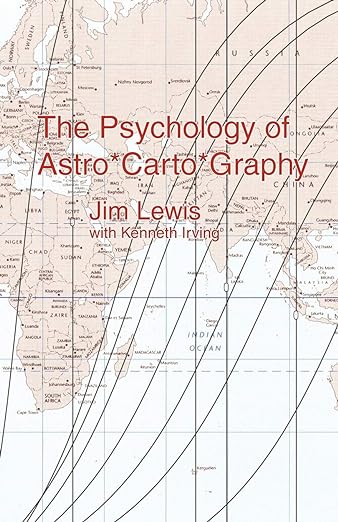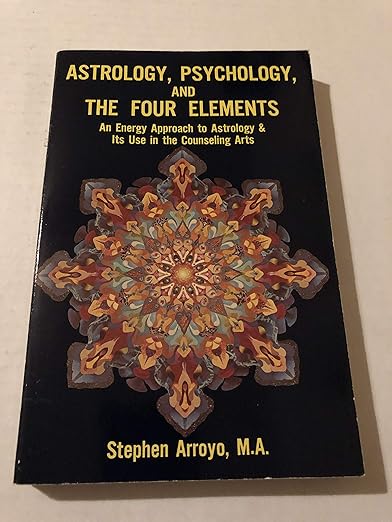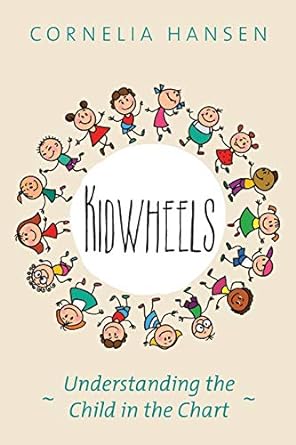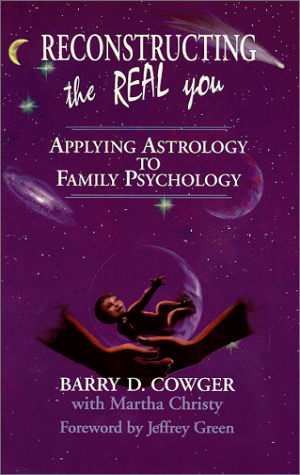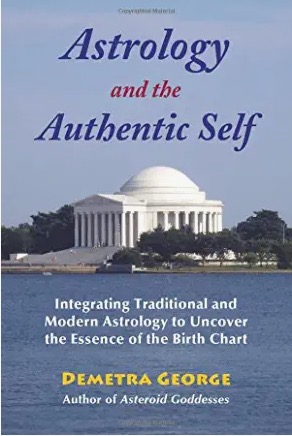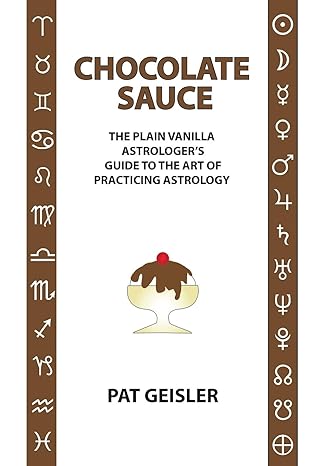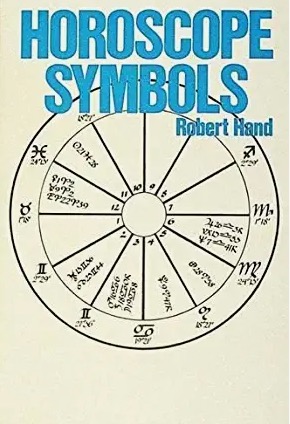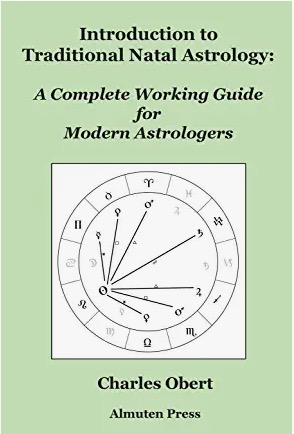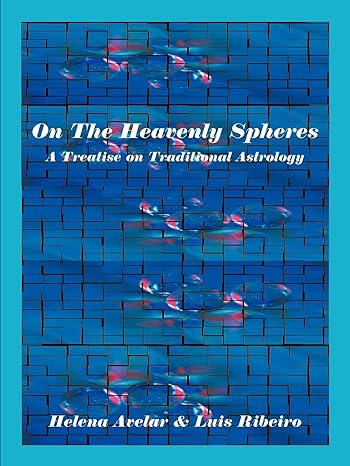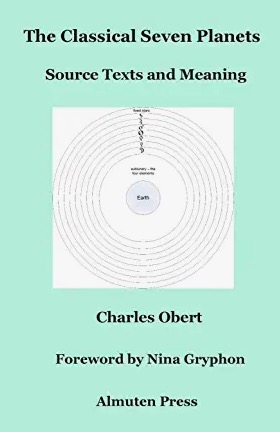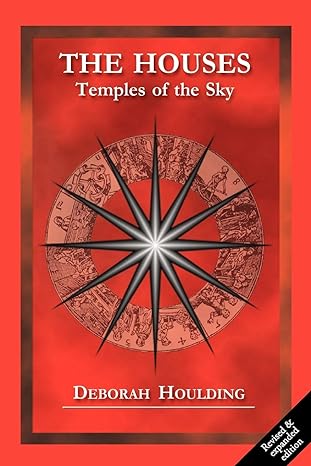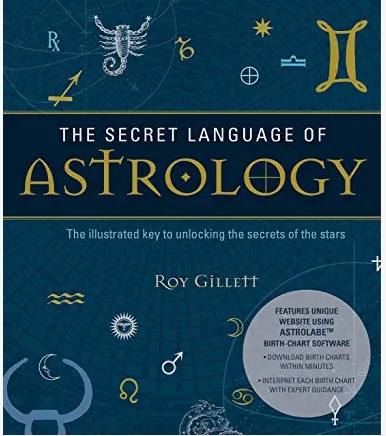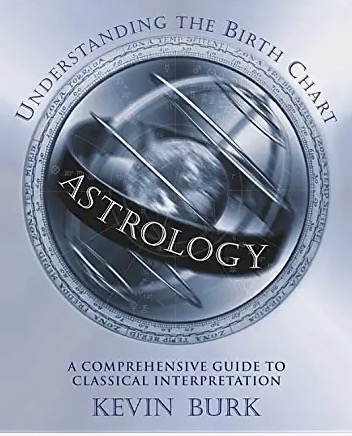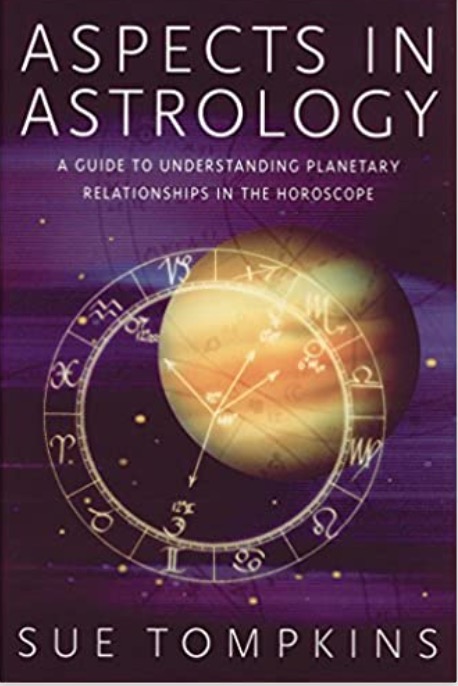[et_pb_section][et_pb_row][et_pb_column type=”4_4″][et_pb_text]The Kepler College Maggie A. Nalbandian Memorial Collection
By Denise Menton
The Maggie A. Nalbandian Memorial Library (“Maggie’s Library”) was the onsite astrological library at Kepler College from the time the college opened its doors in March 2000 through June 2021, when the college gave up its physical location. The library was christened the Maggie A Nalbandian Memorial Library in 2016, in honor of Maggie Nalbandian (1937–2015), who was one of the founders of Kepler College. Maggie Nalbandian was an astrologer, lecturer, counselor and teacher; she was the owner of the Astrology et al bookstore in Seattle, and the founder of NORWAC. Maggie Nalbandian had a vision of a university that would incorporate astrology into academia, and she was instrumental in making that vision a reality, thus leading to the formation of Kepler College. Having an astrological library for research and study was part of the original mission of Kepler College and continues to be part of its mission today.
"Local Space is no "subtle plane," but a personal landscape painted in bold and clear strokes and tailor-made to fit the psyche of each individual. Here is a world where the modern man or woman is learning to move across the face of this earth in an endless dance of adjustment and tuning of his radix -- of his or her self. Individuals driven in particular directions on a checkerboard world, unable to resist travelling toward a goal that is no particular place on earth so much as it is a direction imprinted within them, the direction of a force or planet, "There! Where Power hovers", to use Don Juan's expression. In a word, here is perhaps the must direct astrological system, where the obvious is enthroned and the subtle unnecessary." Both the astronomy and the astrology are included, along with step-by-step examples on how to interpret Local Space charts. 207-pages. 140 illustrations.
Author: Erlewine, Michael
"Local Space is no "subtle plane," but a personal landscape painted in bold and clear strokes and tailor-made to fit the psyche of each individual. Here is a world where the modern man or woman is learning to move across the face of this earth in an endless dance of adjustment and tuning of his radix -- of his or her self. Individuals driven in particular directions on a checkerboard world, unable to resist travelling toward a goal that is no particular place on earth so much as it is a direction imprinted within them, the direction of a force or planet, "There! Where Power hovers", to use Don Juan's expression. In a word, here is perhaps the must direct astrological system, where the obvious is enthroned and the subtle unnecessary." Both the astronomy and the astrology are included, along with step-by-step examples on how to interpret Local Space charts. 207-pages. 140 illustrations.
Author: Erlewine, Michael
Astro*Carto*Graphy(r), developed by the late Jim Lewis, revolutionized astrology by transforming the ancient horoscope wheel into a world map that shows at a glance where a person can find love, money, vitality, or even jump-start a fading career - simply by moving to a new location. The Psychology of Astro*Carto*Graphy, based on Lewis writings, notes, and lectures, with additional material by Kenneth Irving, has long been hailed as the definitive work on the subject, and this new edition revises and extends the information found in the original. Detailed explanations of the changes each planet can bring to a particular location help the reader to apply Astro*Carto*Graphy s insights to his or her own life. The book also includes useful notes, an index, historical and technical notes on Astro*Carto*Graphy, a resource section for further study, and afterwords on Jim Lewis, the man and the teacher, and the continuing charitable work that stems from his legac
Author: Lewis, Jim
Astro*Carto*Graphy(r), developed by the late Jim Lewis, revolutionized astrology by transforming the ancient horoscope wheel into a world map that shows at a glance where a person can find love, money, vitality, or even jump-start a fading career - simply by moving to a new location. The Psychology of Astro*Carto*Graphy, based on Lewis writings, notes, and lectures, with additional material by Kenneth Irving, has long been hailed as the definitive work on the subject, and this new edition revises and extends the information found in the original. Detailed explanations of the changes each planet can bring to a particular location help the reader to apply Astro*Carto*Graphy s insights to his or her own life. The book also includes useful notes, an index, historical and technical notes on Astro*Carto*Graphy, a resource section for further study, and afterwords on Jim Lewis, the man and the teacher, and the continuing charitable work that stems from his legac
Author: Lewis, Jim
"Local Space is no "subtle plane," but a personal landscape painted in bold and clear strokes and tailor-made to fit the psyche of each individual. Here is a world where the modern man or woman is learning to move across the face of this earth in an endless dance of adjustment and tuning of his radix -- of his or her self. Individuals driven in particular directions on a checkerboard world, unable to resist travelling toward a goal that is no particular place on earth so much as it is a direction imprinted within them, the direction of a force or planet, "There! Where Power hovers", to use Don Juan's expression. In a word, here is perhaps the must direct astrological system, where the obvious is enthroned and the subtle unnecessary." Both the astronomy and the astrology are included, along with step-by-step examples on how to interpret Local Space charts. 207-pages. 140 illustrations.
Author: Erlewine, Michael
Author: Arroyo, Stephen
Author: Hansen, Cornelia
Author: Cowger, Barry
Author: Arroyo, Stephen
Author: Hansen, Cornelia
Author: Cowger, Barry
In the previous post I commented on a view of triplicity rulers that was prevalent in the 15th century. Having recently watched an interview with Jenn Zahrt done by Mychal A. Bryan, I was interested in comparing what Jenn had to say with the 1485 text of Diego of Torres who taught astrology to university students in Salamanca. One of the comments that Jenn made, which garnered a lot of interest, was the idea that the third triplicity lord of the 9th house had to do with one’s relationship to astrology and divination
Required for Fundamentals II (W102)
Astrology and the Authentic Self is a ground-breaking work by Demetra George, one of the most the respected authors in her field. This book provides a model for the practicing astrologer to analyze a client's life purpose as indicated through the natal chart. It addresses significant concerns, such as relationship and vocation and provides methods for determining current timing movements. She gives the methods to communicate this complex information in a concise and professional manner within the context of an astrological counseling session. Ms. George provides an excellent introduction to the doctrines of ancient astrology concerning how to determine the condition of a planet and its capacity to be effective and produce favorable outcomes. She outlines how to follow these traditional guidelines, but interprets them within a modern context, adding the insights of more contemporary approaches.
Author: Demetra George 316 pages, copyright 2008
Required for Fundamentals II (W102)
Whether you're a beginning student or a practicing professional, Horoscope Symbols takes you beyond your present conception of astrology into a whole new realm of understanding. Horoscope Symbols takes the beginner beyond cookbook interpretations to genuine insight, beyond superficial keywords to the fundamental principles that underlie astrology, beyond overemphasis on signs to the primacy of planets and angles. Although Hand assumes little prior knowledge of astrology, the more you know, the more you will get out of this book. Hand takes the expert beyond the fatalism of tradition to a deep understanding of the role of personal choice in the life of the individual, beyond fortune telling to the true source of human experience.
Author: Rober Hand 368 pages, copyright 1981
Required for Fundamentals I (RN101, RN103, & RN104)
For modern astrologers, a complete step-by-step guide to learning and using traditional Western astrology techniques. It covers the history and world view of traditional astrology, outlines the primary geometry and number symbolism, and covers the leading techniques and concepts. There is also a step-by-step natal interpretation outline and several fully worked examples.
Author: Charlie Obert 254 pages, copyright 2015
Thousands of years ago, people first observed a correlation between the heavenly bodies and events on Earth. Out of these early observations and subsequent refinements came what today is known as astrology. For most of these millennia, astrologers used only the seven visible planets: Sun, Moon, Mercury, Venus, Mars, Jupiter and Saturn. It is out of this tradition that Helena Avelar and Luis Ribeiro have written this extensive book on astrology. The rules and principles here presented apply to all branches of astrology,natal, mundane, horary and elective. Their method is the traditional and time-honored one, and includes, among others, chapters on: The Planets The Zodiac and the Signs The Essential Dignities The Houses The Aspects Chart Dynamics The Condition of the Planets The Fixed Stars The Parts The Power of the Planets Using this traditional method, it is possible not only to thoroughly and completely read the natal chart but to do so with a breadth and depth of meaning not found in the modern methods of astrological interpretation. It avoids cookbook-type methods and centers on the practical understanding of the astrological concepts, presenting the Tradition in present-day language. In addition, more than two hundred fifty illustrations make the traditional principles easy to understand and use in chart interpretation. This practical how-to book is one of a kind, and the one that will teach you the traditional methods and you reach into the past to benefit from the knowledge of the authors and astrologers from ancient Babylonia through the medieval period. It is suitable for both beginners and advanced students, as it provides the indispensable core of astrological knowledge, at the same time allowing more experienced students to organize their knowledge into a coherent system.
Author: Helena Avelar, Luis Ribeiro
Required for Fundamentals III (W103)
This book has the meanings of the classical seven planets of traditional astrology as described in the work of five major authors from astrology's tradition: Vettius Valens, Abu Ma'shar, Al-Biruni, William Ramesey and William Lilly. There is also information on the overall context of meaning of the planets, and suggestions to get the most out of the traditional texts.
Author: Charlie Obert 180 pages, copyright 2020
Required for Fundamentals I (RN101)
This is a vital addition to any astrologer’s bookcase. Deborah Houlding has been instrumental in bringing traditional astrological techniques back to the forefront of modern-day practice. In this hugely popular book she discusses the background of house systems and the meanings of the houses in the context of ancient, traditional and modern astrology. This is an invaluable book and a must for those new to astrology.
Author: Houdling, Deborah
Required for Fundamentals I (RN101)
What is the effect of each of the planets on your zodiac sign? What is the influence of the 12 "houses"? What are "aspects," and how do they relate to your birth chart? In this unique book and weblink package, renowned astrologer Roy Gillett uncovers the hidden layers of astrology to explain the complex interplay of influences that shape our character.
Author: Roy Gillett 160 pages, copyright 2017
Required for Fundamentals II (W102)
Astrology: Understanding the Birth Chart is designed to be useful to all students of astrology, from beginners to more advanced practitioners, and will help you develop an integrated, synthesized approach to understanding the birth chart. You will discover how classical astrology can enrich your understanding of the planets, signs, and houses. You will explore the meaning of the Lunar Nodes, eclipses, the angles, retrograde planets, and aspect patterns. You will also learn how to identify key themes in the chart, and how to relate the different aspects and elements together to gain a holistic understanding of the birth chart-and of the individual. An up-to-date listing of astrological organizations and software programs is included that offers a wealth of resources for any astrologer
Author: Kevin Burk 368 pages, copyright 2001
Table of contents
- 1. What else is there?
- 1.1. And what makes a planet?
- 2. Minor Planetary Bodies
- 2.1. Asteroids
- 2.2. Chiron the Centaur
- 2.3. Asteroid or Dwarf?
- 2.4. Pluto and the Dwarfs
- 3. The Moon's Nodes
- 3.1. North vs South Node
- 3.2. Eclipses and the Nodes
- 3.3. Lunar Nodes - Meaning
- 4. Calculated Points: Part of Fortune
- 5. Fixed Stars
Astrology is born from the observation of the sky. This quick 8-minute video gives an overview of the astronomy of the solar system and how astronomy intersects with astrology.
- Margherita Fiorello looks at the philosophical underpinnings of why astrological practice works and considers what it means for the southern hemisphere. Some of the comments to this article are very interesting, particularly one from Robert Bailey, a Southern Hemisphere astrologer who does not believe that any inversion should occur: "As a practicing traditional astrologer who lives in the Southern Hemisphere I often think about this issue myself. You may therefore be surprised that I agree entirely with Morin in that we should definitely NOT go ahead and invert the zodiac for the Southern Hemisphere."
Robert Hand walks us through ancient greek thought and practice in house division and the earliest examples of charts with and without angles.
See his rationale for signs as houses, as he refers back to the ancient practitioners.
Chris Brennan examines the ancient use of whole sign houses.
Required for Fundamentals I (RN101)
Aspects are an essential piece of the astrological puzzle when it comes to interpreting and using the information that astrology can give us. It is not enough to know the placement of the planets on the horoscope. It is the relationships between the stars and planets that let us grasp the destiny of the individual. Aspects describe the drama of our lives--the complex configurations that influence what will happen to us over time.
Author: Sue Tompkins 312 pages, copyright 2002
- This article is by Alice Portman, an Australian astrologer: "The Sun moves into this hemisphere when it reaches 0-degree declination on the Equator close to the 23rd September each year. This point is designated 0 degrees of Libra and is the start of the Southern Hemisphere spring because the Sun is entering this hemisphere. It is the start of the Northern Hemisphere Autumn because the Sun is leaving that hemisphere.
- So, in the Southern Hemisphere, Libra is a spring sign, not an autumn one and carries many of the fast-growing, entrepreneurial qualities of Spring, yet remains an air sign that is tactful, balanced and people-oriented."
A quick look and study guide to the houses:
Placidus, Koch, Equal, Meridian, Campanus, Regiomontanus, Alcabitius, Porphyry, Topocentric.
This collection includes our celebrations of the International Astrology Day and special events, for example, the NASA flyby of Pluto or a new Star Trek movie.
Conversations + Candid Talks: from the Astrologers you know and Love, and the one's you've yet to meet.- This astrologer doesn't believe that any changes are necessary for Southern Hemisphere charts to work. " The zodiac signs are symbols, and as symbols, they have taken on characteristics of seasonal changes. But their influencing of personality is not a result of these changes."
"What is it then? I'm not sure. What I do know, or what I am personally convinced of, is that the psychological archetypes represented by zodiac signs keep their profound meaning and influence over human temperament and personality. Perhaps the ancients were wrong from the beginning, believing that it was an unknown force from the Sun and planets and the actual seasons that lay its mark upon us. Perhaps it was only ever symbolical/psychological."
This presentation includes a brief overview of each of the planets plus charts of individuals for whom those planets are emphasized.
The Planets, an OverviewVocabulary, methodology, and other considerations. A short video by Enid Newberg.
Required for Fundamentals I (RN101, RN103, & RN104)
For modern astrologers, a complete step-by-step guide to learning and using traditional Western astrology techniques. It covers the history and world view of traditional astrology, outlines the primary geometry and number symbolism, and covers the leading techniques and concepts. There is also a step-by-step natal interpretation outline and several fully worked examples.
Author: Charlie Obert 254 pages, copyright 2015
A historical overview of Uranus and its status in Astrology, and as ruler of Aquarius.
This movie shows the motions of the solar system from 1543 until late 1550 AD as seen from above the ecliptic plane. Two perspectives are shown:
- The perspective of 'a fixed earth', showing how the motions appear from a geocentric viewpoint. Please note that this is not a realization of the Ptolemaic System proper: We are computing actual solar system motions seen from the reference frame of the earth.
- The perspective of a fixed sun, showing how the motions appear from a heliocentric viewpoint. Again, this is not strictly the "Copernican" model as proposed in De Revolutionibus, as we are using computed actual motions, not a realization of the complex system of heliocentric epicycles proposed by Copernicus.
The first segment traces out the path of the Sun and Mars, showing Mars through one evolution of its retrograde motion as seen from the Earth. From this "geocentric" perspective, the true orbital paths of Venus and Mercury trace out complex looping motions. The second segment begins by stopping the motion, erasing the paths, and then shifting to the heliocentric perspective. We then watch the evolution of the orbits of the 4 inner planets (Mercury, Venus, Earth, and Mars) through one Martian sidereal period (1.52 years), and the zoom out and view the orbits of the outer two of the 5 naked-eye planets, Jupiter and Saturn.
The orbital motions in both segments are the same, only the point of view (fixed-earth vs. fixed-sun) has changed.
The point of this movie is to show how complex the paths appear from the perspective of a moving Earth, and how much simpler they become when we shift our perspective to that of a fixed Sun.
Movie by Rick Pogge, using Starry Night Pro (v3.0.2)
Required for Fundamentals I (RN101)
This is a vital addition to any astrologer’s bookcase. Deborah Houlding has been instrumental in bringing traditional astrological techniques back to the forefront of modern-day practice. In this hugely popular book she discusses the background of house systems and the meanings of the houses in the context of ancient, traditional and modern astrology. This is an invaluable book and a must for those new to astrology.
Author: Houdling, Deborah
This 7-minute clip shows in dramatic fashion just how much space our solar system takes up. LA-based filmmakers Wylie Overstreet and Alex Gorosh decided to build a to-scale model of the solar system across almost 50 square miles of open desert in the Black Rock Desert in Nevada. The planets are represented by balls and light bulbs, the Earth by a marble. Based on that half-an-inch orb of blue glass, they calculated the scale size of each orbit and planet. (In other words, you need to walk a mile from the marble of earth to get to Saturn).
To scale model of the Solar SystemRequired for Fundamentals I (RN101)
What is the effect of each of the planets on your zodiac sign? What is the influence of the 12 "houses"? What are "aspects," and how do they relate to your birth chart? In this unique book and weblink package, renowned astrologer Roy Gillett uncovers the hidden layers of astrology to explain the complex interplay of influences that shape our character.
Author: Roy Gillett 160 pages, copyright 2017
The dilemma
When the South hemisphere question first came to my mind, I was puzzled by the fact classical calculations were not reflecting the season's inversion. In the meantime, if we opted for inversing the signs for the Southern hemisphere to make them match with the seasons, we then came with another problem: people born close to each other but in opposite hemispheres (1° North and 1° South of the equator) would end up with opposite Sun signs and this does not make sense at all. The best solution was then to keep the status quo, and not inverse anything. But, when in 1997, I read Max Duval's article (1) suggesting to inverse the signs, not on the equator, but on the ecliptic, I got hooked by the idea as it was starting to make more sense!"
Alan Leo writes on methods of subdividing the zodiac while tracking movement in the chart (transits, secondary progressions, solar arc directions)
"This article seeks to provide a baseline from which to
explore the meaning of Haumea."
-Chester Lambert
Required for Fundamentals II (W102)
Astrology and the Authentic Self is a ground-breaking work by Demetra George, one of the most the respected authors in her field. This book provides a model for the practicing astrologer to analyze a client's life purpose as indicated through the natal chart. It addresses significant concerns, such as relationship and vocation and provides methods for determining current timing movements. She gives the methods to communicate this complex information in a concise and professional manner within the context of an astrological counseling session. Ms. George provides an excellent introduction to the doctrines of ancient astrology concerning how to determine the condition of a planet and its capacity to be effective and produce favorable outcomes. She outlines how to follow these traditional guidelines, but interprets them within a modern context, adding the insights of more contemporary approaches.
Author: Demetra George 316 pages, copyright 2008
". The problem is how to integrate the meanings resulting from the positions of two opposite points in opposite houses — and, of course, in opposite signs also."
James Holden analyzes how modern technology has changed the development of astrology, and the way we practice it.
Required for Fundamentals II (W102)
Whether you're a beginning student or a practicing professional, Horoscope Symbols takes you beyond your present conception of astrology into a whole new realm of understanding. Horoscope Symbols takes the beginner beyond cookbook interpretations to genuine insight, beyond superficial keywords to the fundamental principles that underlie astrology, beyond overemphasis on signs to the primacy of planets and angles. Although Hand assumes little prior knowledge of astrology, the more you know, the more you will get out of this book. Hand takes the expert beyond the fatalism of tradition to a deep understanding of the role of personal choice in the life of the individual, beyond fortune telling to the true source of human experience.
Author: Rober Hand 368 pages, copyright 1981
Origins, development of use, orbs, dexter, sinister, dominating planets.
From the movements to symbolism, Kathy's article reflects on the seasonal correlations and multi-traditional meanings of the nodes.
"I am going to provide an alternate explanation of the Gauquelin’s Mars effect that does not show a primary peak in the 12th and secondary peak in the 9th, but rather the primary peak is in the 1st house and the secondary peak is in the 10th house where such peaks should be expected. This, the alternate result is found by using the whole sign house system – the original house system of the
Hellenistic astrologers who invented modern horoscopic astrology used in both the West and India though the Indians use a different zodiac. The whole sign house system is radically different to ascendant based house systems such as Placidus."
Terry MacKinnell
"Does the Zodiac Have a 13th Sign?
Controversy over the zodiac rears its ugly head as
much regularity as the seasons themselves"
Glenn Perry talks about seasons, and star grouping, guiding us through the sky and our relevant relationship to its changing sequences.
Plant discusses the mathematical relationship and synodic makeup of the Parts.
Hand discusses the Greek roots of fate, and the impacts we have as astrologers who predict.
This report produces the general text for the various midpoint combinations of those planets or
points that have been selected for display on a chart. This text is not specific to one chart but may
assist in your understanding of synthesizing planetary meanings for midpoints.
The Solar Fire Midpoint interpretations text has been written by UK astrologer Julian Venables.
Required for Fundamentals II (W102)
Astrology: Understanding the Birth Chart is designed to be useful to all students of astrology, from beginners to more advanced practitioners, and will help you develop an integrated, synthesized approach to understanding the birth chart. You will discover how classical astrology can enrich your understanding of the planets, signs, and houses. You will explore the meaning of the Lunar Nodes, eclipses, the angles, retrograde planets, and aspect patterns. You will also learn how to identify key themes in the chart, and how to relate the different aspects and elements together to gain a holistic understanding of the birth chart-and of the individual. An up-to-date listing of astrological organizations and software programs is included that offers a wealth of resources for any astrologer
Author: Kevin Burk 368 pages, copyright 2001
In this talk, originally released as a Kickstarter reward, I address the "Spiritual Purpose of Astrology." I decided to release this to the general public after realizing a lot of people wanted to hear about this topic who couldn't afford to donate! Enjoy! www.nightlightastrology.com
Techniques and practical applications of early Greek Astrology. Introduction to such topics as traditional planets, benefic and malefic meaning, whole sign houses.
"In summary, it may be that the so-called “burned path” or Via Combusta of ancient astrology was to the Babylonians the path of the Milky Way as it traversed the circle of zodiacal constellations. "
Lunar phases in our natal charts, and the relationships we seek. How our Sun and Moon correlate to our experiences in relationship.
Consciousness was dismissed as a topic for scientific discussion in psychology for over fifty years. Now things have changed. Bernard J. Baars presents a model of consciousness as a global workspace and suggests that the contours of consciousness can be understood by contrasting conscious and unconscious events. Generally, the unconscious processes work far more efficiently that those that are conscious. Baars points out that we are conscious only of the goals of our actions and not of the thousands of miniscule steps that are necessary for even the simplest of muscular movements. He describes the "self" as a concept that represents the continuity of all the conscious and unconscious processes of the mind.
Getting your chart out of the way/ Non astrology video.Finding strengths and weaknesses in the natal chart.
"The post-modern sensibility reflects a radical shift in the collective psyche or cognitive landscape. To my mind, it highlights a symmetry-breaking process in relation to the urges underlying patriarchally based thinking. Post-modern commentators are fond of writing articles with titles like "The Death of the Author", "The End of History", etc., which reflect this cathartic transformation."
Bob Marks discusses interpretive principles around the hemisphere, elements, angles, and modalities.
Bruce Lipton and Steve Bhaerman explore what is needed for our collective transformation. They discuss how the polarization of two obsolete and “obsolethal” (obsolete AND deadly) paradigms – patriarchal religion and “godless” science – is calling us to a critical time in our cultural evolution.
Getting our chart out of the way. Non astrology video.Importance of planets in houses, and positions of signs. What's in a sign?
"
In episode 255 of the podcast astrologers Chris Brennan and Benjamin Dykes unveil a new discovery about the origins of the exaltations, derived from a lost Hermetic text preserved by Abu Ma’shar.
Last summer Keiji Yamamoto and Charles Burnett released their long-awaited translation of The Great Introduction to Astrology by the 9th century astrologer Abu Ma’shar. This was the first time this text has been translated into English in its entirety.
I received my copy on July 30, 2019, and the most interesting thing I found was that Abu Ma’shar frequently cites a lost Greek text attributed to Hermes Trismegistus. This appears to be the same text called the Panaretos that the 4th century astrologer Paulus Alexandrinus drew on for his treatment of seven planetary Lots, although Abu Ma’shar shares much more from the text than Paulus did.
The most interesting pieces of the Hermes material preserved by Abu Ma’shar is that it contains a set of rationales for the domicile and exaltation schemes that are unique, and it seems to preserve what may be the original conceptual rationales for both of those schemes.
The exaltations chapter in particular provides a much more detailed explanation for the exaltations than any I’ve ever seen, and it is also unique because it provides an astronomical rationale for the exaltations degrees, not just the signs of exaltation and fall."
The Astrology Podcast: Video formatIn the first part of this series (TMA Feb./March 2012), you were introduced to some of the basic concepts of Hellenistic astrology and learned how those concepts were used in order to determine information about an individual’s fate. In this final part, I will present two-timing techniques that were used by Hellenistic astrologers to determine when certain events would occur during the course of a native’s life.
Historical, practical, and theoretical rationales for the Joys of the planets, and the places they take Joy.
"Part of insights' mystique is their seemingly sudden and random appearance. Why do insights come when they do? We might be stumbling in the dark for days, desperate for illumination, yet nothing comes. According to Eastern traditions, the explanation may lie with the Moon."
"In traditional astrology, the Sun and the Moon are not actually considered as planets, but as the "lights" — the Light of the Day and the Light of the Night. They symbolize the two fundamental aspects of that universal Power which ancient philosopher-mystics saw as the dynamic warp and woof of the material world."
Rudhyar
While most popular religions have spoken of man as a twofold being — soul and body, or even angel and beast — the more occult and philosophical traditions have described him as a tri-une being: spirit, soul and body, or spiritual monad, psychic being and physical-vital organism.
"Mythology holds the template, the image of those archetypes. The wisdom has been preserved for centuries, hidden from those who would erase it, protected for those who would seek to find it."
"Abstract: By looking in detail at the philosophical and technical intricacies of a set of ancient astrological theories and their treatment of issues of determinism and free will, I show that there are good reasons to question the grounds for a distinction between science and pseudoscience, modern and premodern."
Astrology is a foreign language because it operates in way far removed from anything else in our experience. It involves causes which are unlike any causes we are familiar with. Not only are the causes different, they are the complete opposite of what we are used to. Educated humans in the 21st century think they have a pretty good idea of what reality is all about. Yes, there might be a few loose ends, but broadly speaking no major upsets are expected. Enter astrology from stage left, and chaos ensues!
"The big question is whether astrology can be moved on, beyond merely noting correlations, and itself become the means whereby we can improve life, perhaps even by avoiding the very perils to which the planets are pointing."
A brief discussion on differing views on the mathematical and philosophical implications of differing astrologies.
Abstract: Two groups of extreme characters are analyzed,
uncovering sharply defined patterns of VE and MO in diurnal
sectors, which it is suggested show the Gauquelin Effect in
concentrated form. The evidence points to an origin in heliocentric
synodic cycles of the planets, while the mechanism of birth timing
likely involves MO in signs or lunation phase together with sectors.
Significant patterns are also found in Gauquelin sectors at the time
of Pre-natal moons.
a deep look at combustion, and how to interpret them individually.
In this ephemeris, we are primarily focusing on the historical influences of Uranus, Neptune, and Pluto because their cycles of orbit and interrelationship are sufficiently long to be of great relevance in understanding long-term cycles.
When Kepler first began its journey in 1992, the founders put out a call to the astrological community for books. Many answered, including ISAR (International Society for Astrological Research), which donated its entire library. In the years that followed, numerous astrologers donated or bequeathed personal collections to the library, some with handwritten notes in the margins, which provided insights to future readers. Maggie’s Library developed into the largest publicly available collection of astrology books and center for astrological research in the Pacific Northwest. The collection contained over 2500 books, ephemera, periodicals and journals, as well as original research from legends like Marian March, Lois Rodden, Neil F. Michaelson and Robert Hand’s project Hindsight; there were self-published pamphlets from luminaries like Dane Rudhyar, as well as works by astrologers who had never published a book. There were also tools which predated computer software programs such as compucharts, transparencies, chart overlays and forms that student and astrologers could use to further their study and research. Enid Newberg, former college President, Trustee and now Kepler’s Librarian, comments that astrology is a serious study, and astrologers deserve to know the depth and breadth of our astrological history. “There’s nothing quite like actively engaging oneself in the tactile experience of searching for a book, and then immersing oneself in the magic that unfolds.”
The library was initially located in Lynwood, Washington, but went into storage after Kepler College was unable to get accredited as a liberal arts college and closed its physical campus. In 2015, Dr. Jenn Zahrt, then a member of the Board of Trustees, reestablished the library at a new location in Kirkland, Washington. In a podcast interview with Shannon Garcia, then the owner of the Mountain Astrologer, Dr. Zahrt talked about her experience of collecting, unpacking and cataloguing all the boxes of stored books with fellow board member, astrologer Wonder Bright and assisted by Maggie’s son Greg Nalbandian (listen to the interview here https://soundcloud.com/mountainastro/004-kepler-library). Jenn said: “As we were unpacking the books, it was like taking all the astrologers who had ever been published, and they were having a party. It was like visiting old friends and also having a cacophony of voices …heated discussions that you get into at conferences…books screaming at other books and the entire space was filled with all of our lore, all of our techniques and all of the recorded past of our history. There were moments when we were moved to tears as we were unpacking…it was the ultimate living room of astrology books.” In 2016, Kepler College moved the library back to Lynwood, Washington to the new physical location it had opened to serve its burgeoning certificate and diplomas. Enid Newberg served as the guardian of the library until its closure due to the COVID-19 pandemic.
In June 2020, Kepler College sold Maggie’s Library to CAELi, where it continues to live on as a core component of CAELi’s holdings.[/et_pb_text][/et_pb_column][/et_pb_row][/et_pb_section]


